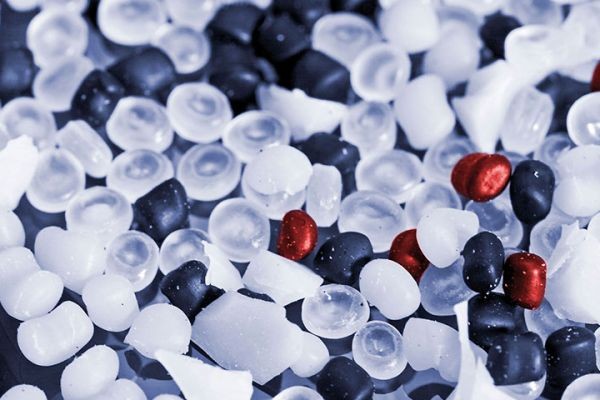The global conditioning polymers market is experiencing a significant surge, propelled by a powerful confluence of consumer trends, technological innovation, and industrial demands. These specialized polymers, essential for imparting softness, manageability, and a luxurious feel to a wide range of products, are no longer just auxiliary ingredients but central components in product formulation. Understanding the primary drivers behind this growth is crucial for stakeholders across the chemical, cosmetic, and textile industries. This article delves into the key factors fueling the expansion of the conditioning polymers market.
1. The Unstoppable Rise of Premium Personal Care and Cosmetics
The most potent driver for conditioning polymers is the robust growth of the personal care and cosmetics industry, particularly in the premium and performance segments. Consumers are increasingly educated and discerning, seeking products that deliver tangible benefits beyond basic cleansing.
-
Demand for Multifunctionality: Modern consumers desire shampoos that clean and repair, conditioners that detangle and add shine, and lotions that moisturize and protect. Conditioning polymers are fundamental to achieving these multifunctional claims. Cationic polymers, for instance, provide excellent detangling and anti-static properties for hair, while silicone-based polymers offer unparalleled smoothness and slip for both hair and skin.
-
The "Experience" Economy: Personal care is increasingly viewed as a form of self-care. The sensorial experience of a product—its texture, feel, and performance during and after application—is a critical purchasing factor. High-performance conditioning polymers are essential in creating the rich lather, creamy consistency, and silky after-feel that define a premium product experience.
2. The Formulation Shift Towards Sulfate-Free and Mild Products
A major trend reshaping the personal care landscape is the move away from harsh surfactants, like sulfates (SLS/SLES), towards milder, naturally-derived alternatives. While better for scalp and skin health, these milder surfactants often lack the luxurious lather and conditioning effects that consumers expect.
This is where conditioning polymers step in as a critical solution. Formulators are increasingly relying on these polymers to:
-
Compensate for Mildness: They add back the slip and detangling properties that harsh sulfates provided, ensuring the product remains effective and pleasurable to use.
-
Enhance Performance: Polymers help stabilize formulations, improve viscosity, and enhance the deposition of active ingredients onto hair or skin, making mild products just as, if not more, effective than their traditional counterparts.
3. The Sustainability and "Clean Beauty" Imperative
The global push towards sustainability and the rise of the "clean beauty" movement are dual forces significantly influencing polymer development and selection. Consumers are scrutinizing ingredient lists, seeking biodegradable, eco-friendly, and ethically sourced components.
This driver is catalyzing innovation within the conditioning polymers market:
-
Bio-Based and Natural Polymers: There is growing demand for polymers derived from natural sources like plants, cellulose, and starch. These offer a renewable alternative to synthetic polymers and align with clean label trends.
-
Biodegradability: Regulatory pressures and consumer awareness are pushing manufacturers to develop polymers that break down easily in the environment, reducing ecological impact. This is leading to advancements in polymers like Polyglutamic Acid (PGA) and other novel, eco-friendly conditioning agents.
-
Water-Soluble Silicones: To address concerns about traditional silicones building up on hair and potentially in waterways, the market is seeing a shift towards water-soluble and biodegradable silicones that provide the desired conditioning benefits without the environmental drawbacks.
4. Expansion into Technical and Industrial Applications
While personal care remains the dominant segment, the application of conditioning polymers is expanding into diverse industrial sectors, creating new growth avenues.
-
Textile Industry: Conditioning polymers are vital in textile manufacturing, where they are used as softeners, anti-wrinkle agents, and fabric finishers. They improve the hand-feel of fabrics, reduce static cling, and enhance durability. The demand for high-quality, comfortable apparel and technical textiles is directly boosting consumption in this sector.
-
Detergents and Fabric Care: In household and industrial detergents, conditioning polymers are added to fabric softeners and laundry detergents to make clothes feel softer, reduce friction (and thus pilling), and provide anti-static properties.
-
Agriculture and Coatings: Specialized polymers are used in agrochemicals as adjuvants to improve the adherence of pesticides to plant leaves. They also find applications in paints and coatings to modify their flow and leveling properties.
Conclusion: A Future Built on Innovation
The conditioning polymers market is not merely growing; it is evolving. The drivers of this growth—premiumization in personal care, the sulfate-free revolution, the demand for sustainability, and industrial expansion—are interdependent and persistent. They are compelling manufacturers to invest heavily in research and development to create next-generation polymers that are more effective, multifunctional, and environmentally responsible. As these trends continue to shape consumer preferences and industrial practices, conditioning polymers will remain indispensable, underpinning the development of innovative products that meet the sophisticated demands of the future.

